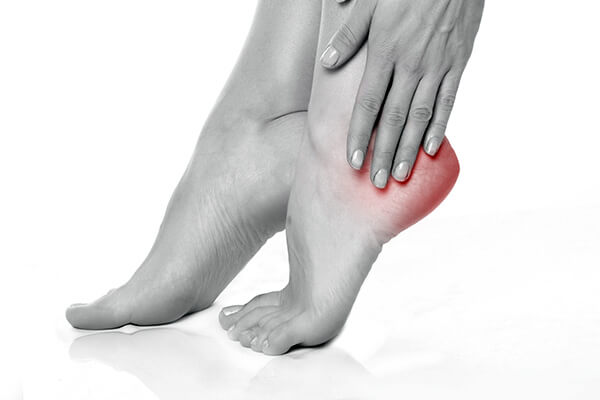
Foot pain comes in many forms, one of them being plantar fasciitis. It causes you to feel sharp, stabbing heel pain when you step on the floor. The pain is usually worse when you take your first steps in the morning and reduces during the day as you move around. The pain might return after you stand for long periods of time or if you stand up after sitting for a while.
Plantar fasciitis happens when the plantar fascia becomes inflamed. The plantar fascia is a thick band of connective tissue (ligament) that connects the heel bone to the toes. It is a problematic area for many people and can become inflamed due to being overweight (even from a pregnancy), wearing shoes that don’t provide adequate support and running (which is why plantar fasciitis is common in many athletes).
If plantar fasciitis has become a staple in your life, don’t despair. You can manage this pain with some simple stretching and strengthening exercises.
Which Muscles Should I Stretch?
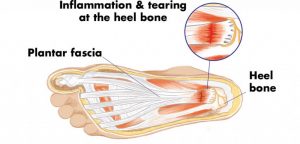
You should focus on stretching the plantar fascia. Stretching it makes it more flexible, which has the benefit of reducing inflammation and preventing further injury. You should also stretch the taut muscles in your feet and calves. These muscles are known to worsen plantar fasciitis.
When to Stretch?
Stretching before an exercise is essential because it helps prepare your body for the oncoming exercise. Warming up loosens tight muscles, making them relax, and increases blood flow as well. It’s also important to stretch after the exercise to reduce soreness and inflammation and prevent muscle fatigue. Although stretching before and after is vital, this is not a hard rule that you must follow; the most important thing is that you find some time to stretch during your day.
How to Stretch Properly?
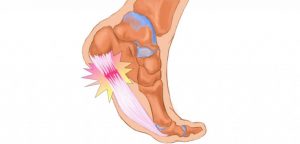
If you don’t know how to stretch properly, you could just end up doing more harm than good. Follow these simple tips below to get the most out of your stretches:
Before you begin stretching, warm up your body and muscles with some light jogging or some calisthenics to increase your range of motion. This is a good way to prevent injury when stretching. One of the biggest causes of plantar fasciitis is a sudden increase in activity without adequately preparing for it.
Pain Relief Medications
If you want to enjoy the exercises a little more, taking pain relief medication 30 minutes before exercising is a good idea. That way, they will have time to kick-in, effectively reducing the pain as you perform the exercises. Take some NSAIDs (Nonsteroidal Anti-Inflammatory Drugs) like aspirin, ibuprofen, and diclofenac. You can even take them after you exercise for better results.
Stop If You Feel Pain
As you work on stretching your heel, feeling some pain is normal. What you need to be aware of, however, is when to stop. If the pain you’re feeling ceases after you finish the exercise, then it is okay to continue. If it remains, then you should stop the exercise altogether and rest before you worsen the problem.
Ice for Heel Pain
After exercising, your heel will probably have some inflammation-related pain due to the stress that has been exerted on the plantar fascia. Icing your heel works wonders when it comes to reducing the pain and inflammation in this scenario. You should also regularly ice your heel to prevent the plantar fasciitis from turning into chronic pain (once the pain becomes chronic, icing your heel does nothing).
10 Plantar Fasciitis Exercises:
You shouldn’t perform these strengthening exercises if you’re in pain due to your plantar fasciitis acting up. To avoid compromising your feet, you should start these exercises again once the inflammation in your plantar fascia has gone down and the pain has subsided.
1. Towel Curls
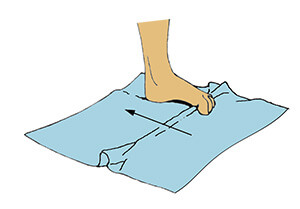
While sitting down, place your foot at one end of the towel. Now use your toes to pull the other end of the towel towards you. Next, use your toes again to push the towel away. You can put a weighted objected, like a book or soup can, at the other end of the towel to increase the intensity of the exercise.
2. Arch Raise
You can do this exercise while seated or standing by placing your feet flat on the ground and relaxing them. The goal of this exercise is to raise the arch of your foot, the area between your big toe and the heel while keeping the foot flat on the ground. Standing increases the intensity of the exercise, and it should be repeated 10-15 times.
3. Marble Pickups

This is a simple exercise where you place 3-4 marbles next to a cup. Next, you use the toes of the affected to pick up the marbles one by one and place them in the cup.
4. Heel Raises
While standing barefoot with your feet flat on the ground, raise your heels as if you are trying to stand on your toes, using the balls of your feet as support. Hold this position for a couple of seconds before lowering your heels back down slowly. To make it more challenging, you can try performing the heel raises on some steps.
5. Balance and Reach Exercise
This exercise is a bit tricky, so place a chair next to you in the direction you will be reaching to act as a support in case you need it. Stand on the affected foot and bend your knee a little bit. Now, raise the arch of your foot without raising the big toes and maintain this position throughout the exercise. Then bend your waist and reach out in front of you (reach further to increase the intensity of this exercise). Repeat this exercise 10-15 times.
6. Walk Barefoot in the Sand
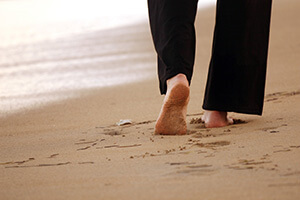
Just remove your shoes and walk barefoot on the beach or any surface with sand to perform this exercise.
7. Point and Flex
Sit down in a chair, extend the affected foot and point the toes forward, as far as you can, while keeping your ankle straight. Then flex your toes back up. Do this about 10 times.
8. Ankle Circles
This is another simple but effective exercise where you sit in a chair, lift your foot and try to draw circles using the big toe. Be sure to change directions back and forth (clockwise then anticlockwise). Since this is a low impact exercise, you need to do it as many times as possible for it to be effective.
9. Prone Hip Extension
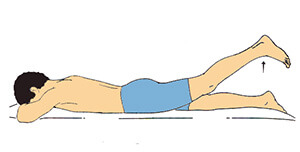
Lie face down on the floor with your legs extended at the back. With your arms folded, rest your head on them. Tighten the muscles on your abdomen and then raise the affected leg off the ground. Hold this position for 5 seconds, then lower the leg down slowly. Do this 10-15 times.
10. Side-Lying Leg Lift
This is another exercise that you perform while lying down. The only difference is that this time you lie on your side with the affected foot above and the unaffected foot below. Now, raise the affected foot slowly, remembering to keep it straight, and then lower it back down slowly. Do this 10-15 times.
8 Plantar Fasciitis Stretches:
As mentioned earlier, stretches help relieve heel pain and make the plantar fascia and calf muscles more flexible.
1. Towel stretch
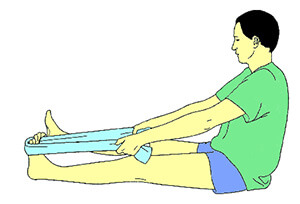
Grab a towel at both ends and roll it up to form a strap. Sit down on the floor and place the ball of your foot in the middle of the towel. Now all you have to do is pull the towel gently towards you and hold the stretch for about 20-30 seconds. Repeat the stretch about 2-3 more times.
2. The Toe Stretch
This exercise needs to be performed seated on a chair while maintaining a good posture throughout. Next, extend your affected leg and grab the big toe. Gently pull it towards you and hold the stretch for 15-30 seconds. Repeat the exercise 2-3 more times a couple of times during the day.
3. Standing Calf Stretch (1)
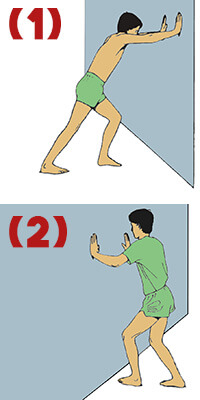
Stand next to a wall and place your hands on it, making sure the hands are at eye level. Place the troubled leg a step behind the other one. Bend your front knee while making sure the affected foot’s ball is kept on the ground throughout. Hold this position for 15-30 seconds. Do 2-3 more repetitions.
4. Soleus Stretch (2)
Place the affected foot on the floor and keep it flat while bending your knees. Lean forward using your other foot by extending it in front of you, making sure you are placing most of your weight on the affected foot until you feel a gentle stretch in your calf. Now, hold this position for 15-30 seconds and perform the stretch again 2-3 more times.
5. Seated Plantar Fascia Stretch
Seat on a chair and cross the leg with the heel pain over the other one. Grab your toes with one hand and pull them towards you. You can even use your other hand to massage the plantar fascia while you are at it. Hold this position for 15-30 seconds and do 2-3 more repetitions throughout the day.
6. Tennis ball stretch
If you want your plantar fascia to be less irritated when you get up in the morning, massage it with a tennis ball. Place a tennis ball on the ground, put your foot on top of it and then roll it around for 3-5 minutes. Repeat this exercise 2-3 times a day. Apply some pressure on the tennis ball to get a deeper massage.
7. Step Stretch
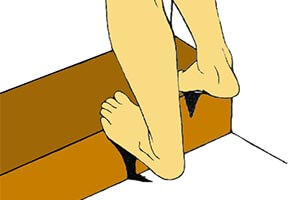
Stand on a step using the balls of your feet. Then lower the heel of the affected foot until you start to feel your calf muscles stretch. Hold this position for about 45 seconds and repeat the stretch 2-3 times. Do it 3-5 more times during the day.
8. Frozen can roll
This is similar to the tennis ball stretch. The only difference is that you use a frozen can or water bottle, which has the added benefit of reducing inflammation.
Conclusion:
Many people just don’t know how manageable plantar fasciitis is and live their lives powering through this pain until it becomes a chronic problem. Living with plantar fasciitis makes walking unbearable most of the time, and this shouldn’t be the case. When you focus on these exercises, not only will you improve your plantar fasciitis, you will also improve your quality of life.
Sources:
American Family Physician, Treatment of Plantar Fasciitis
The Chartered Society of Physiotherapy, Exercise advice: foot pain





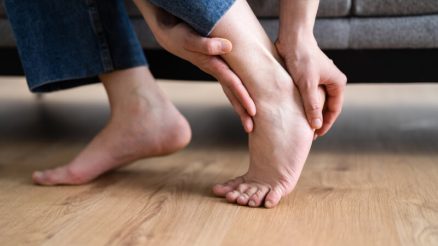
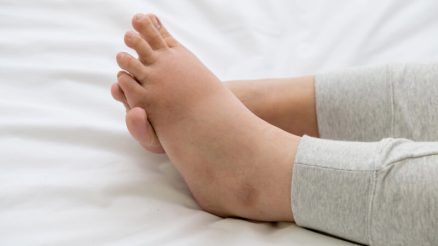
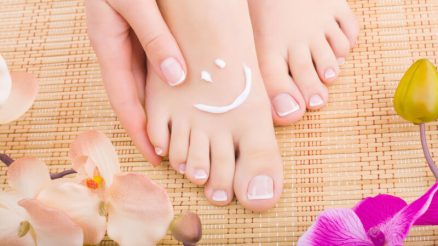

Can u guys suggest any economical shoes for plantar fascitis.. I m an industrial engineer ..need to protect as well as care of my foot..pls help .. I m from India.. any shoes.. UK 8 size..